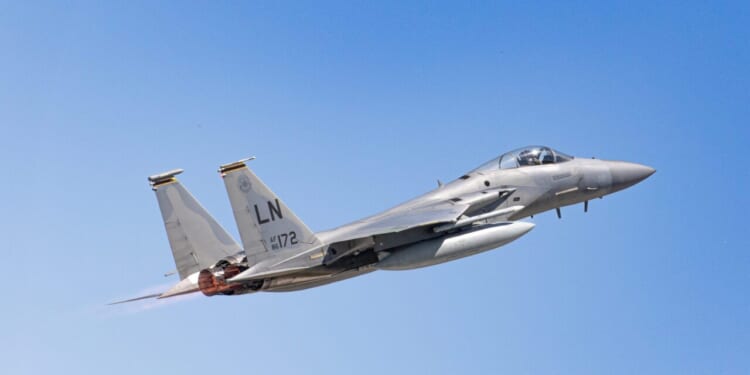Until now, the plan was to retire the venerable combat jets by the end of 2026.
The US Air Force plans to continue using its venerable F-15C/D fighter jets for several more years.
However, the service aims to transition the older combat aircraft from overseas operations to homeland defense.
“Platinum Eagles” to Fly Until 2031
The Air Force plans to extend the service of its old F-15C/D fighter jets for an additional four years. According to a report submitted to Congress in August, the service plans to completely retire its “Platinum Eagle” fleet by fiscal year 2031. Until now, the plan was to retire the venerable combat jets by the end of 2026.
According to the report, divestment of the F-15C/D is “nearly complete,” and the “Platinum Eagle” fleet will be available to undertake homeland defense missions through 2030. The report clearly links the future of the F-15C/D fleet with developments on the F-15EX Eagle II, the latest version of the F-15 platform. Increasingly more Air Force and Air National Guard units are receiving the F-15EX, which was initially intended for homeland defense, thus opening the way for a potential swap in mission sets between the F-15C/D and F-15EX.
The report highlights that many aircraft, including the F-15C/D, were procured in the 1970s, 1980s, and 1990s and are thus operating beyond their original service lives.
“This leads to reduced availability rates, increased maintenance requirements, and higher sustainment costs,” the report states.
The F-15 is one of the most successful fighter jets in recent history, with over 100 kills without any losses.
Speaking about the report, an Air Force official stated that “we expect full divestment of F-15C/Ds in FY2031 when they are replaced by the F-15EX. Until that time, we plan to maintain the 21 most viable F-15C/Ds at Fresno, home of the California Air National Guard’s 144th Fighter Wing.”
Titled “Long-Term Fighter Force Structure,” the report outlines progress across different fighter, attack, and bomber capabilities, as well as proposes different capability requirements based on potential threat levels.
“[The Air Combat Command] is actively managing the fleet to ensure the most viable F-15C/Ds (referred to as Platinum Eagles) remain in service,” the Air Force official added.
The F-35 Is Coming
The Department of Defense and Lockheed Martin designed the F-35 Lightning II stealth fighter jet as the future workhorse of the US military. As an aircraft that can conduct several different mission sets, it can thus streamline procurement and production. In the future, instead of buying three different aircraft, one for air superiority, another for close air support, and one for electronic warfare, the US military will just buy more F-35s.
As the F-35 Joint Strike Fighter program continues to produce more F-35 Lightning II fighter jets—the Air Force alone has ordered more than 1,700 F-35s—the service will be in a better position to replace aging aircraft like the F-15C/D. The service operates approximately 500 F-35s. However, with a global demand from over 20 countries and services, including the Navy and Marine Corps, it will be some time before the Air Force has all the F-35s it wants.
Until then, the Air Force will need to find alternative ways to project power across the world, respond to potential contingencies, and ensure the defense of the homeland.
About the Author: Stavros Atlamazoglou
Stavros Atlamazoglou is a seasoned defense journalist specializing in special operations and a Hellenic Army veteran (national service with the 575th Marine Battalion and Army HQ). He holds a BA from the Johns Hopkins University and an MA from the Johns Hopkins’ School of Advanced International Studies (SAIS). His work has been featured in Business Insider, Sandboxx, and SOFREP.
Image: Kostas Alkousis / Shutterstock.com


















